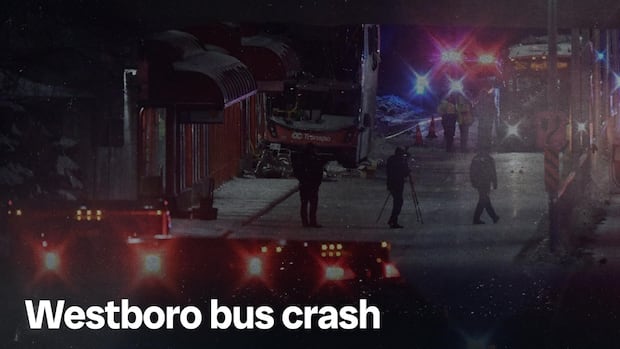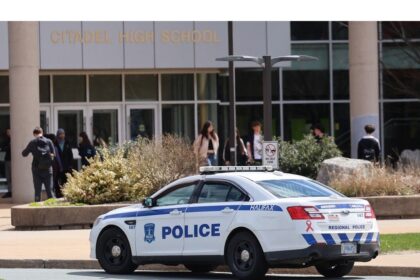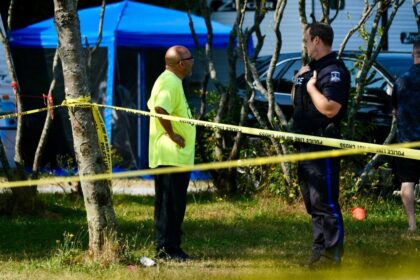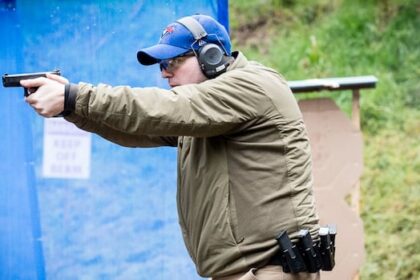OttawaThe coroner’s inquest into the fatal 2019 OC Transpo bus crash is hearing about changes the transit agency has made to its training of new recruits since the Westboro collision.Minimum training hours for each bus type introduced after crashGuy Quenneville · CBC News · Posted: Apr 14, 2025 1:45 PM EDT | Last Updated: 5 hours agoThe coroner’s inquest into the fatal OC Transpo bus crash of 2019 is hearing about what changes the transit agency has made to its training of new recruits since the Westboro collision. (CP) Stream the inquest live here. The OC Transpo bus crash that left three people dead in 2019 isn’t mentioned during the transit agency’s training of new drivers, a witness told the ongoing coroner’s inquest into that tragedy.But that fateful afternoon has become a demarcation line for how new recruits are taught the ropes.The number of hours during OC Transpo’s new driving training has increased, and training hours are now mandated on each type of bus used in Ottawa, Lindsay Toll told the inquest on Monday.Toll, section manager of training and development for the city’s transit services department, spoke during Day 9 of the public deep dive into the crash.On Jan. 11, 2019, a packed OC Transpo double-decker slammed into a Transitway bus shelter at Westboro station. Three people — Judy Booth, Bruce Thomlinson and Anja Van Beek — died in the crash. Many others were injured, triggering a flurry of lawsuits.Bruce Thomlinson, 56, Judy Booth, 57, and Anja Van Beek, 65, all died in the Jan. 11, 2019 crash. (Ottawa Police Service)While the city accepted civil responsibility for the crash, the bus driver, Aissatou Diallo, was charged with 38 counts of dangerous driving causing death or bodily harm. She was acquitted of all charges in a judge-only trial in 2021.One of the inquest’s focuses is OC Transpo’s New Bus Operator Training (NBOT) program. It has two parts: one delivered by Ontario’s Ministry of Transportation (MTO), and one then taught by OC Transpo.Altogether, drivers must get a minimum total of 60 hours driving time over the course of both parts.In 2018, when Diallo was hired and trained, NBOT lasted 31 days. Today it goes for 36 days, Toll said.And whereas NBOT did not previously require that each trainee get a specific number of hours behind the wheel of different bus types, it now has training requirements for 40-foot single-deckers, 60-foot articulated buses and 40-foot double-deckers.The training hours are now broken down as follows: 15 hours for single-deckers. 8 hours for articulated buses. 8 hours for double-deckers. The change requiring mandated hours came about after a 2020 city audit of OC Tranpo’s training.Toll, a former bus operator of eight years, said double-deckers are obviously heavier and taller but are nonetheless “comparable,” in his experience, to any other 40-foot buses. Catch up on the inquest here The inquest has heard that Diallo received both NBOT and winter driving training and had driven double-deckers for a total of 55 hours (after training) before the Westboro crash.NBOT’s average pass rates (including people who dropped out) in 2021, 2022 and 2023 were 84 per cent, 71 per cent and 68 per cent, respectively. The inquest has not shared rates from before then.The MTO pass rates are lower, Toll said, adding, “people that are eliminated in [that] portion probably wouldn’t be ready to drive a bus in 36 days.”The inquest continues Monday afternoon.WATCH | Looking back on the crash and its lingering impacts:Inquest examines Westboro bus crash that killed 3The collision sparked a flurry of lawsuits against the City of Ottawa and prompted a criminal trial that saw the driver acquitted. Now a public inquest is looking at what happened with fresh eyes. ABOUT THE AUTHORGuy was born and raised in Cornwall, Ont. He can be reached at guy.quenneville@cbc.ca Follow Guy on Twitter
Thursday, 20 Nov 2025
Canada – The Illusion
Search
Have an existing account?
Sign In
© 2022 Foxiz News Network. Ruby Design Company. All Rights Reserved.
You May also Like
- More News:
- history
- Standing Bear Network
- John Gonzalez
- ᐊᔭᐦᑊ ayahp — It happened
- Creation
- Beneath the Water
- Olympic gold medal
- Jim Thorpe
- type O blood
- the bringer of life
- Raven
- Wás’agi
- NoiseCat
- 'Sugarcane'
- The rivers still sing
- ᑲᓂᐸᐏᐟ ᒪᐢᑿ
- ᐅᑳᐤ okâw — We remember
- ᐊᓂᓈᐯᐃᐧᐣ aninâpêwin — Truth
- This is what it means to be human.
- Nokoma












